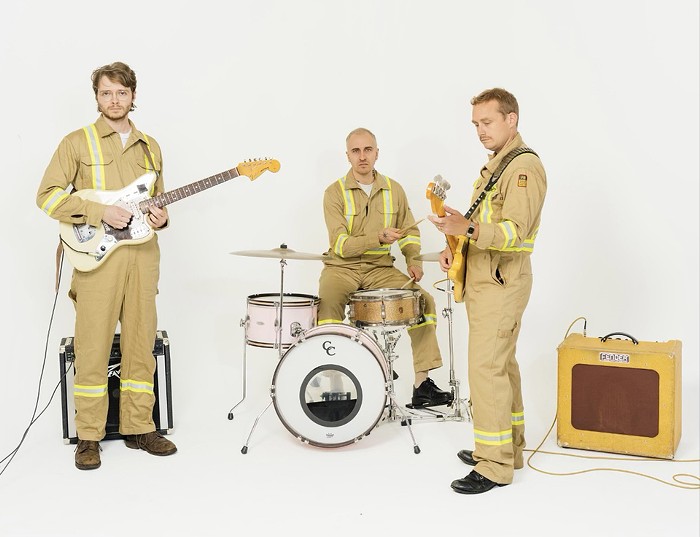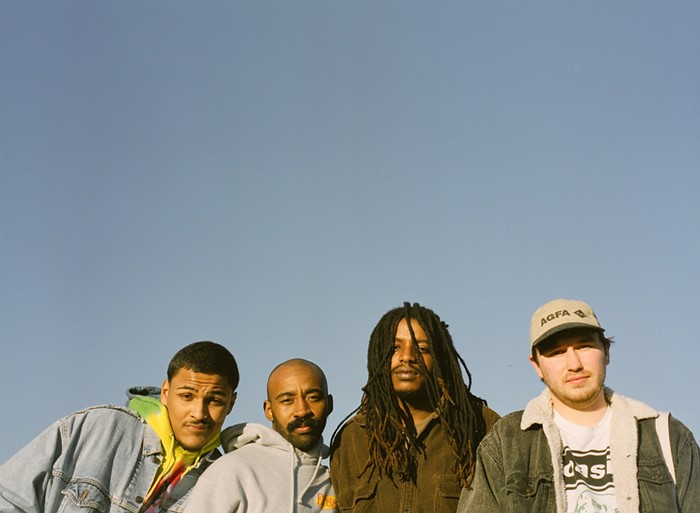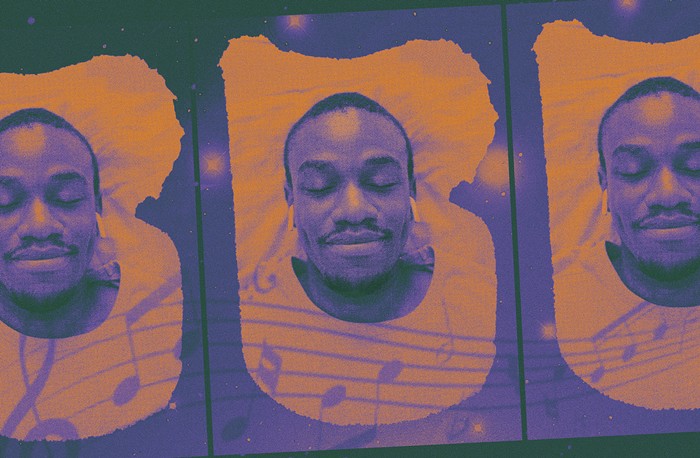Showbox, Tues Nov 13, $12.50/$15.
Some albums are so beautiful to look at they can almost make you cry. It's not the artwork that's being discussed here, although the thoughtful craft that went into creating the somber sleeve imagery for Sparklehorse's latest CD, It's a Wonderful Life, demands attention. The beauty here lies in Sparklehorse frontman Mark Linkous' ability to write rangy, hushed songs hung with the flickering glow of fading kerosene lamps, strewn with tattered memories and transient observations that loom and fade as they cast shadows on a richly sentimental, undeniably Southern landscape.
Linkous makes his home in Virginia, and if the physicality of the state truly can be seen within a musical composition, then Linkous is a documentarian of record. It's a Wonderful Life is dark and mountainous. It's full of crumbly trails leading to uncertainty, and nostalgic structures seemingly on the verge of collapse, yet sure to provide shelter for at least a couple more lifetimes.
Shot through with jagged guitar lines and inventive electronic squiggles, the songs on this contemplative album jut and recede with a delicate, carefully measured flow. The moods rise and fall poignantly as haunting strings illustrate Linkous' evocative lyrics. Songs of loss and sorrow are painted so economically that they are never in danger of sounding maudlin. Songs of hope and happiness are given equal levity, ensuring that their sentimentality scarcely disguises an eerie heart of darkness: "I'm the dog that ate your birthday cake" ("It's a Wonderful Life"); "He got dragged by a donkey through the dirt and the myrtle/but he was once a little fat baby" ("Little Fat Baby").
If anyone has reason to be so suspiciously contemplative about life, it's Linkous. Mid-tour in 1997, the singer accidentally overdosed on tranquilizers and antidepressants. He collapsed, and spent most of a day with his legs pinned underneath him, causing a buildup of potassium that shot to his heart when his legs were straightened. Linkous suffered a heart attack, his internal organs shut down, and the future was uncertain. Years of surgery and physical therapy followed, saving Linkous' legs but leaving him with a slight limp.
Shortly after the accident, Sparklehorse memorably opened a show at the King Cat here in Seattle. Linkous played his guitar seated in a wheelchair, his legs strapped down with braces--but in his captive state the frontman's dedication and spirit were no less commanding. The 1999 album, Good Morning Spider, was loaded with sharp, scratchy glimpses of what Linkous' ravaged body, and ravaged life, must have felt like during the time directly following his near-death experience. One sensed that the singer wasn't sure he had truly survived the ordeal. In contrast, It's a Wonderful Life is full of babies and birth imagery, scenes of sleeping and awakening, and tales involving fire and water, leaving and returning.
However, amid all the twisted optimism, it's hard not to hear Linkous' voice as that of a man who isn't altogether sure why he's still here, but who's going to make the best of the second chance he was given anyway. He's grateful, but not blindly accepting of his fate: "I can't seem to breathe with a rusted metal heart/I can't seem to see through solid marble eyes" ("Piano Fire").
Guests abound on It's a Wonderful Life. PJ Harvey lends her voice to two tracks, the Cardigans' Nina Persson can be heard adding lilt to "Apple Bed," and Tom Waits provides vocals and lyrics for the effects-laden "Dog Door." Throughout the album, and as on Good Morning Spider, Linkous' passion for vintage keyboards is evident. The track notes list Optigan, Orchestron, Wurlitzer piano, Mellotron, Prophet 5, Moog, and KORG among the instruments used. This layer-upon-layer sound and structure is most likely what caused the Sundance Channel to offer Linkous a one-hour program (Sonic Cinema: Sparklehorse) featuring cinematic renderings of the songs on It's a Wonderful Life, by notable artists and filmmakers including Jem Cohen and the Brothers Quay.
Most of the filmmakers referenced the verdant landscape that surrounds Linkous' farm and converted shed/studio--the atmosphere the songwriter surrounds himself with (he ventured out to Los Angeles only for a short time before heading back to the South) is so integral to his work. It's hard to listen to this beautifully crafted hodgepodge of songs without envisioning a sinister darkness camouflaged by inviting forests and the hospitality of well-meaning country folk. Evocative as it is scary, beautiful as it is ragged, and joyful as it is dispiriting, It's a Wonderful Life is that smudged and tattered photograph we stare at for hours even though we know each moment spent doing so pulls us slowly into places we've tried so hard to leave behind. The songs invite us to create our own internal cinema, and thanks to Linkous' rich way with words and music, the view is nothing short of breathtaking.


















